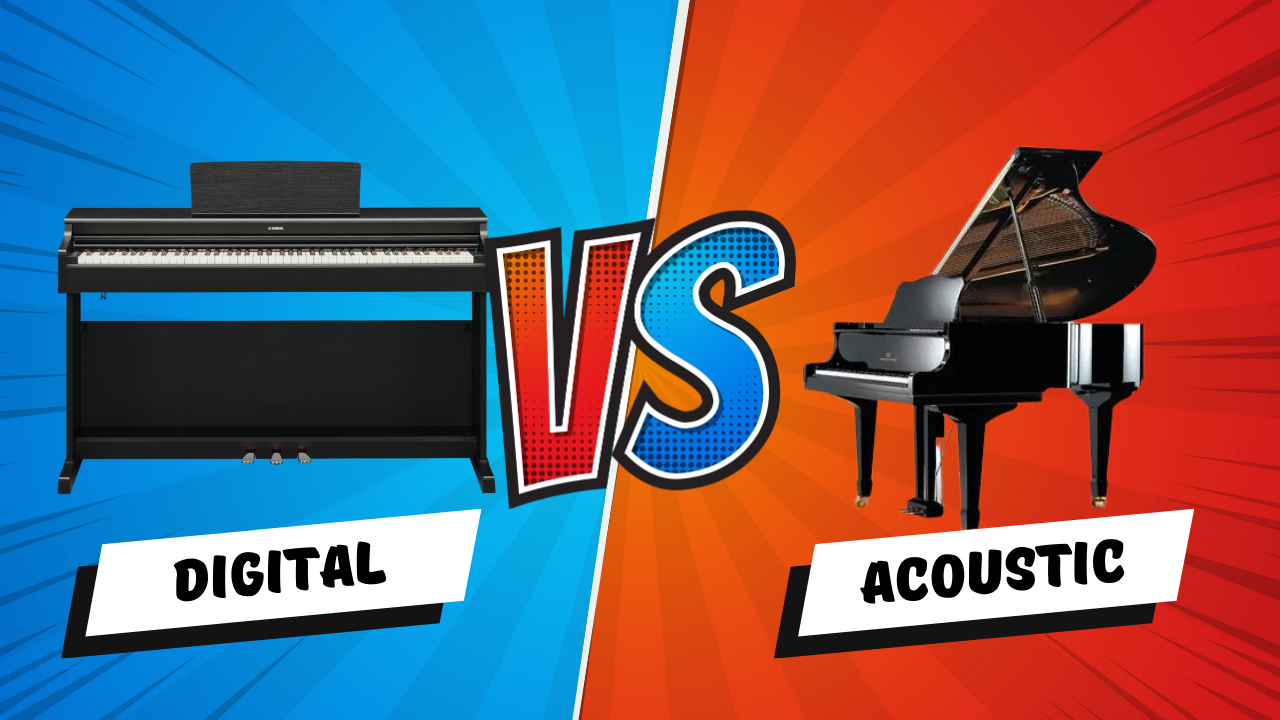When it comes to playing the piano, there’s an ongoing debate between digital and acoustic pianos. Each has its own unique set of advantages and disadvantages. In this blog post, we’ll explore the pros and cons of digital pianos and acoustic pianos, as well as examine some of the most popular brands, including Yamaha, Casio, Roland, and Korg. By the end of this article, you’ll have a better understanding of which type of piano is the best fit for your needs and preferences.
Here is the comparison table for Digital Piano vs Acoustic Piano.
| Aspect | Digital Piano | Acoustic Piano |
|---|---|---|
| Key Action | Weighted, semi-weighted, or unweighted keys; mimics the feel of acoustic pianos to varying degrees | Fully weighted keys; mechanical action provides natural, responsive feel |
| Sound Generation | Digital sampling or modeling; sound quality depends on the technology used | Acoustic soundboard and strings produce organic, authentic sound |
| Resonance | Replicated through digital technology; may not fully capture the complexity of an acoustic piano | Natural resonance created by the soundboard, strings, and other piano components |
| Dynamic Range | Wide dynamic range, but may not be as nuanced as an acoustic piano | Exceptionally wide dynamic range, allowing for subtle tonal expression |
| Sound Variety | Multiple instrument sounds, including various piano tones, strings, organs, and more | Limited to the natural sound of the piano |
| Electronic Features | Built-in metronomes, recording capabilities, headphone jacks, USB/MIDI connectivity, etc. | None, unless fitted with additional electronic components |
| Size | Generally smaller and more compact than acoustic pianos | Upright pianos: medium-sized; Grand pianos: large and require ample space |
| Weight | Lighter than acoustic pianos; varies by model and design | Heavy; upright pianos can weigh 300-800 lbs (140-360 kg), while grand pianos can weigh 500-1,200 lbs (225-545 kg) |
| Portability | Easy to move and transport due to smaller size and lighter weight | Difficult to move and transport due to size and weight |
| Maintenance | Minimal maintenance required; occasional cleaning and firmware updates | Regular tuning, voicing, and regulation required; sensitive to humidity and temperature changes |
| Resell Value | Tends to depreciate more quickly than acoustic pianos | Higher resell value, especially for well-maintained, high-quality brands |
| Life Span | 10-20 years, depending on usage and care | 50-100 years or more, with proper care and maintenance |
| Price | Typically more affordable; wide price range, from budget models to high-end instruments | Generally more expensive; high-quality models can be a significant investment |
| Best Brands | Yamaha, Casio, Roland, Korg | Yamaha, Kawai, Steinway & Sons, Bösendorfer |
The History of Pianos
The piano, as we know it today, has a rich history spanning several centuries. Its invention and development have been influenced by various historical events and the creativity of many musical instrument makers. Let’s delve into the fascinating history of pianos.
Invention of the Piano
The piano was invented by Bartolomeo Cristofori, an Italian musical instrument maker, around 1700. At the time, the harpsichord was the most popular keyboard instrument in Europe. However, it had limitations, particularly when it came to dynamics (the ability to play notes with varying volume).
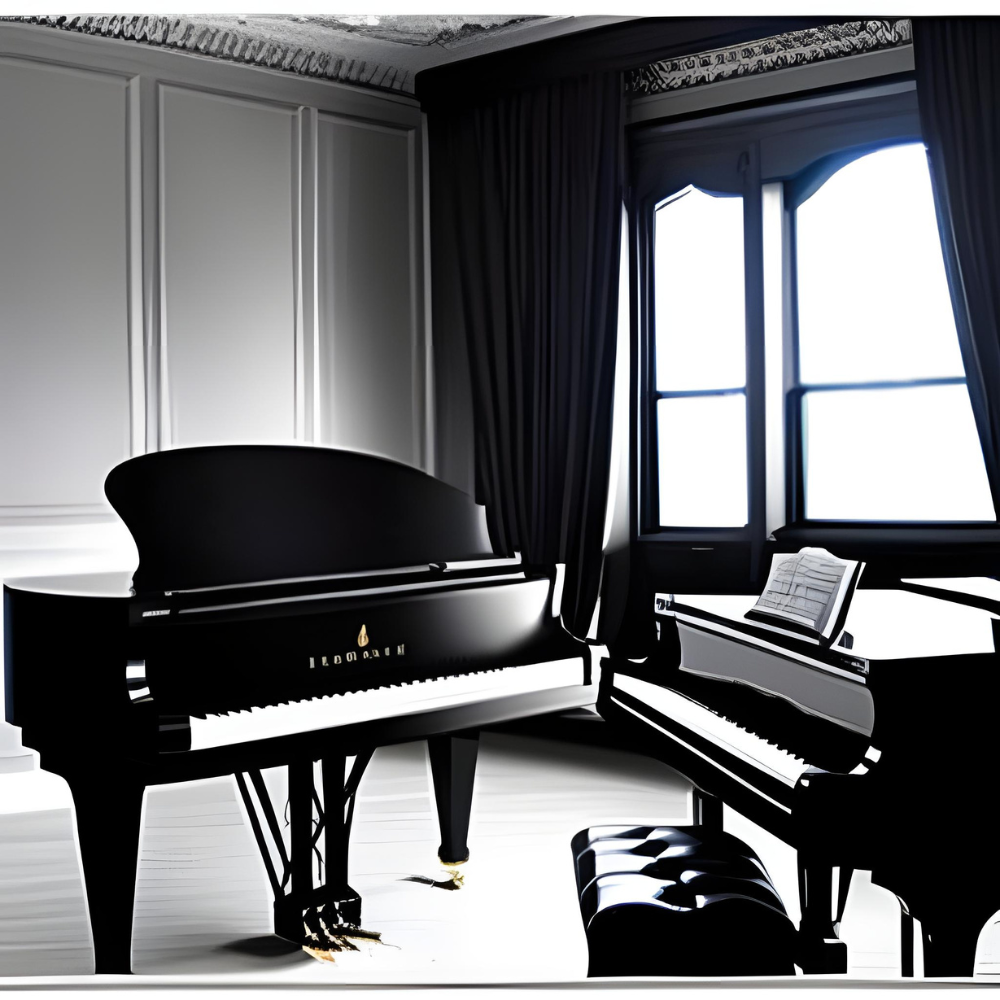
Cristofori sought to create a new instrument capable of a wider range of dynamics and expressiveness. He developed an innovative mechanism called the “hammer action,” which allowed the player to control the volume of each note by varying the force with which the keys were struck. This new instrument was initially called the “gravicembalo col piano e forte,” which translates to “harpsichord with soft and loud.” Over time, it became known simply as the “pianoforte” and later, the “piano.”
Early Pianos and Their Evolution
Cristofori’s early pianos closely resembled harpsichords in appearance but featured the revolutionary hammer action. These early pianos had a more delicate sound and a smaller dynamic range compared to modern pianos.
Throughout the 18th century, the piano underwent several important modifications by various instrument makers. One of the most significant developments was the introduction of the sustain pedal, which allowed the strings to continue vibrating even after the keys were released. The Viennese piano makers, such as Johann Andreas Stein and Anton Walter, created lighter and more responsive instruments with a clear, bright tone that became popular among composers like Mozart and Haydn.
The 19th Century: The Golden Age of Pianos
The 19th century witnessed an explosion in the popularity of the piano, as it became an essential instrument for both professional musicians and households. The Industrial Revolution facilitated the mass production of pianos and improvements in iron casting, which led to the invention of the cast iron frame. This innovation allowed the piano to withstand greater string tension, resulting in a more powerful and resonant sound.
During this time, the piano underwent further refinements in design, action, and materials. The English and American piano makers, such as John Broadwood and Alpheus Babcock, developed heavier and more robust instruments with a deeper, richer tone. The invention of the double escapement action by Sébastien Érard in 1821 enabled faster repetition of notes and improved the overall playability of the piano.
Famous composers like Beethoven, Chopin, and Liszt contributed to the piano’s popularity and pushed the boundaries of the instrument, inspiring further innovations.
The 20th Century and Beyond
In the 20th century, the piano continued to evolve with the introduction of new materials and technologies. The use of plastic and carbon fiber components helped reduce the weight of the instrument and improve its responsiveness.
The invention of the player piano, which used perforated rolls to reproduce music automatically, made it possible for people to enjoy live piano performances in their homes without the need for a pianist.
The late 20th century saw the emergence of digital pianos, which use electronic components to replicate the sound and feel of acoustic pianos. These instruments offer advantages like portability, lower maintenance, and a wide range of sounds and features.
Today, the piano remains an enduring symbol of musical expression and creativity, cherished by performers, composers, and music lovers alike. The ongoing innovations in piano technology ensure that this versatile instrument will continue to captivate and inspire future generations.
Digital Piano vs Acoustic Piano
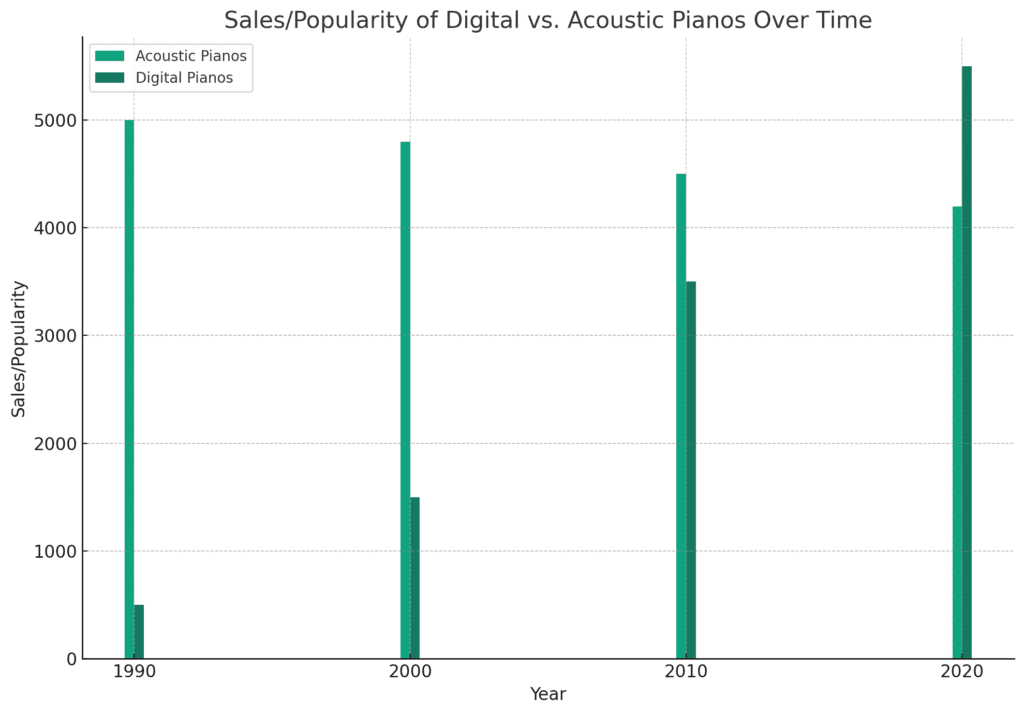
Acoustic Piano
Design
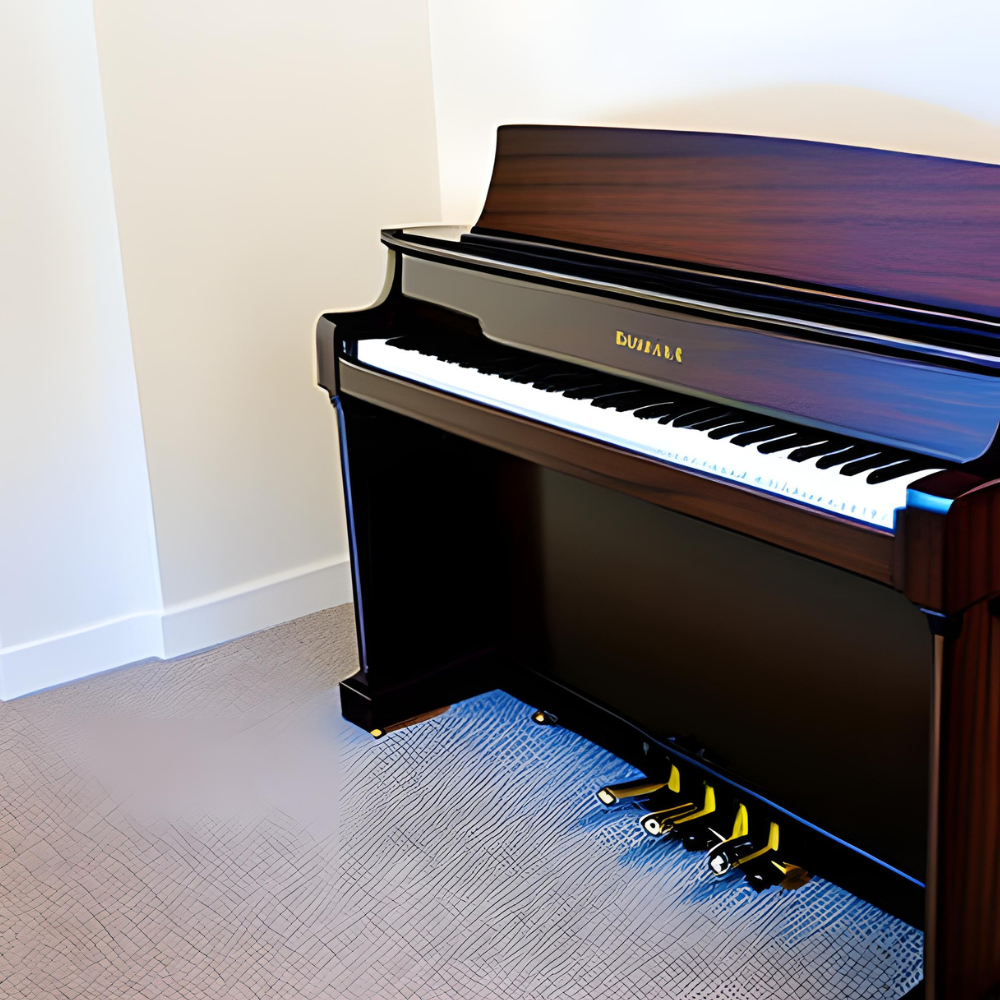
The acoustic piano is a classic musical instrument with a design that has evolved over centuries. It typically comes in two main forms: the grand piano and the upright piano. Grand pianos are larger, with horizontal frames and strings, while upright pianos have a vertical frame and strings. Both types have a wooden body, a soundboard, and cast-iron frames to support the string tension.
Sound
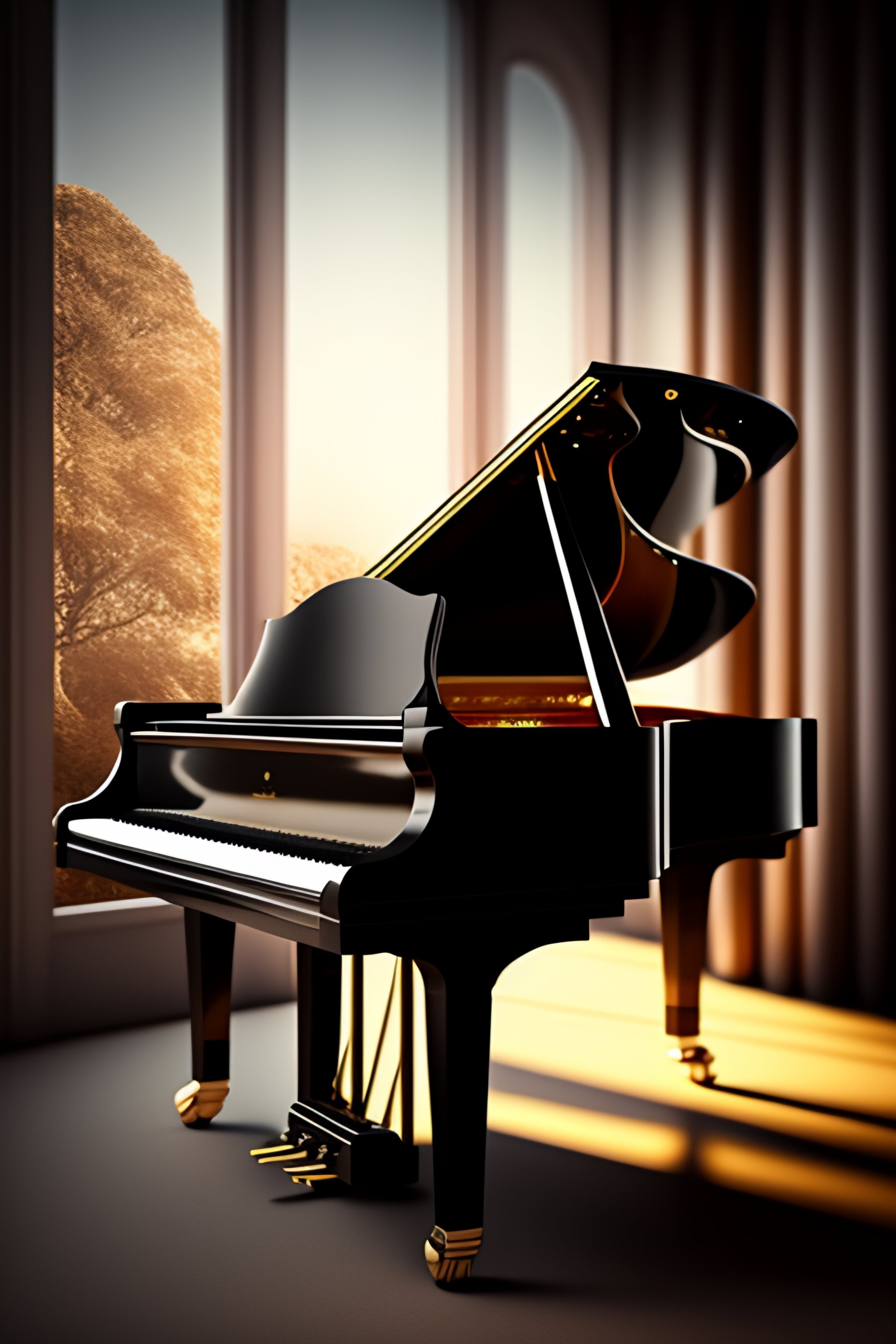
The acoustic piano produces sound when hammers strike the strings, which vibrate and resonate with the soundboard. The sound is rich, warm, and dynamic, with a wide range of timbre and volume. The quality of the sound depends on factors such as the materials used, craftsmanship, and piano size.
Keys
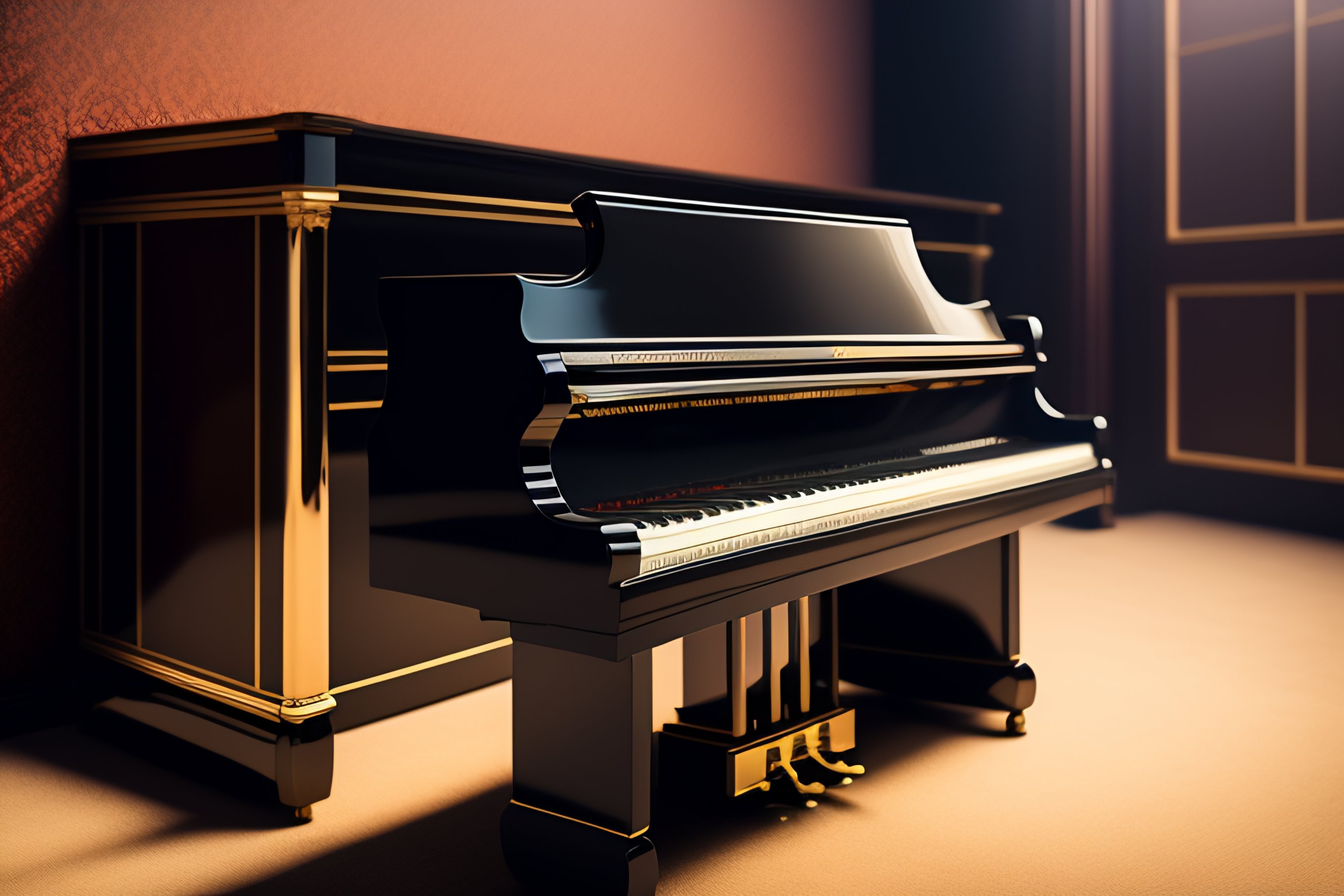
Acoustic pianos typically have 88 keys, consisting of 52 white and 36 black keys. These keys represent a range of seven octaves and three lower notes. The keys are made of wood, covered with either ivory or plastic. Weighted and balanced, they provide a tactile and expressive playing experience.
Electronic Features
Traditional acoustic pianos do not have electronic features. However, some modern acoustic pianos have added electronic components, such as silent systems or MIDI output. Silent systems allow the player to practice without making noise, while MIDI output enables the piano to connect to computers or other MIDI devices for recording and music production.
Pedals
Acoustic pianos usually have three pedals: the sustain (or damper) pedal, the sostenuto pedal, and the soft (or una corda) pedal. The sustain pedal allows notes to resonate after the keys are released, the sostenuto pedal sustains only selected notes, and the soft pedal changes the tonal quality by shifting the keyboard action slightly.
Portability
Acoustic pianos are not portable due to their size, weight, and delicate structure. Moving an acoustic piano requires specialized equipment and expertise to prevent damage to the instrument.
Maintenance
Regular maintenance is crucial for keeping an acoustic piano in good condition. This includes tuning, regulation, voicing, and cleaning. Tuning should be done at least once or twice a year by a professional piano technician, while regulation and voicing may be needed less frequently.
Repairs
Acoustic pianos may require repairs due to wear and tear or accidental damage. Common repairs include fixing broken strings, replacing worn hammers, repairing damaged soundboards, and fixing sticky keys. It is essential to consult a professional piano technician for repairs to ensure the instrument’s longevity.
Price
The price of an acoustic piano varies significantly based on factors such as brand, size, age, and condition. Upright pianos generally cost less than grand pianos, with prices ranging from a few thousand dollars to tens of thousands. Grand pianos can cost anywhere from $10,000 to over $100,000 for high-end models.
Summing it Up
The acoustic piano is a timeless instrument known for its elegant design, rich sound, and expressive playing experience. While it lacks portability and requires regular maintenance, its unique qualities make it a cherished and enduring choice for musicians and music enthusiasts alike.
Pros and Cons
Pros:
Sound Quality: Acoustic pianos offer unparalleled sound quality, with a rich and nuanced tone that digital pianos can’t fully replicate.
Touch Sensitivity: Acoustic pianos provide a more natural playing experience, with superior touch sensitivity and responsiveness.
Longevity: Well-maintained acoustic pianos can last for generations, often increasing in value over time.
Aesthetics: Acoustic pianos are often considered more visually appealing, making them a beautiful addition to any home or performance space.
Cons:
Portability: Acoustic pianos are heavy and difficult to move, making them less suitable for those who need a portable instrument or need to transport it frequently.
Affordability: Acoustic pianos are typically more expensive than digital pianos. They also require ongoing maintenance costs, such as regular tunings and potential repairs.
Volume Control: Acoustic pianos do not offer volume control, which can be an issue for those living in apartments or shared spaces.
Maintenance: Regular tuning and maintenance are required to keep an acoustic piano in optimal playing condition. This can be both time-consuming and costly.
Acoustic Pianos Types
Acoustic pianos come in two main types: upright pianos and grand pianos. Here are some examples of acoustic pianos from well-known brands:
Upright Pianos
- Yamaha U1: The Yamaha U1 is a popular and highly regarded professional upright piano, known for its exceptional build quality and excellent tone. It is often chosen by music schools, conservatories, and professional musicians.
- Kawai K-300: The Kawai K-300 is another top-quality upright piano, featuring Kawai’s innovative Millennium III upright action and a rich, warm tone. It is suitable for both home use and professional settings.
- Steinway & Sons Model 1098: Steinway & Sons is a legendary piano manufacturer, and their Model 1098 upright piano is a testament to their reputation. This instrument offers a beautiful, resonant sound and is built with exceptional craftsmanship.
Grand Pianos
- Steinway & Sons Model D: The Steinway & Sons Model D is considered by many to be the pinnacle of grand piano craftsmanship. This full-sized concert grand piano is revered for its powerful, expressive sound and exceptional build quality.
- Yamaha CFX: The Yamaha CFX is a top-of-the-line concert grand piano that has been used in prestigious concert halls and international piano competitions. It boasts a brilliant, clear tone and an impressive dynamic range.
- Bösendorfer Imperial 290: Bösendorfer is another esteemed piano manufacturer, and their Imperial 290 grand piano is renowned for its rich, warm sound and extraordinary craftsmanship. This instrument features 97 keys, including eight extra bass notes, which further enhance its tonal depth.
These are just a few examples of the many acoustic piano models available from different manufacturers. Each brand and model offers its own unique characteristics, and the best choice for any individual will depend on their personal preferences and playing needs.
Digital Piano
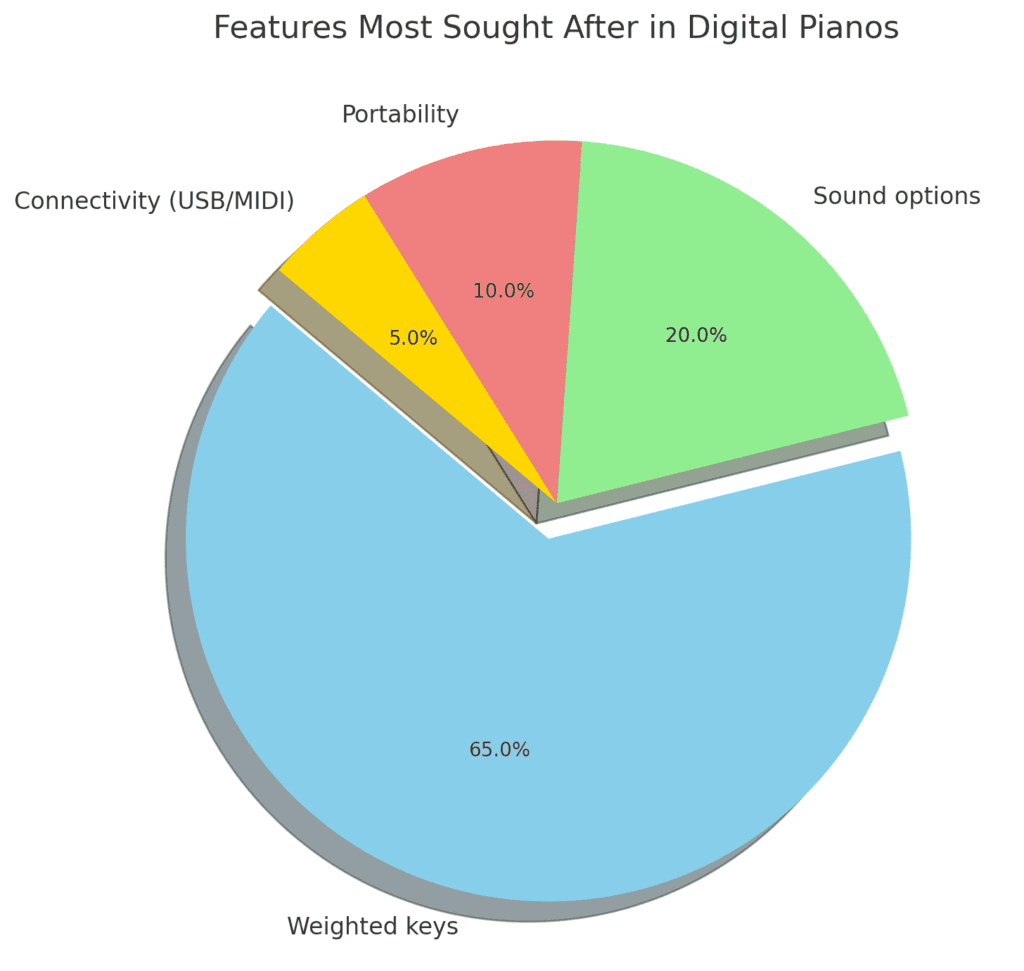
Digital pianos have revolutionized the way musicians and music enthusiasts interact with the piano. These versatile instruments use advanced digital technology to simulate the sound and feel of acoustic pianos, while offering numerous benefits such as portability, lower maintenance, and a wide range of features. They have become increasingly popular for their affordability and adaptability, making them an excellent choice for beginners, hobbyists, and even professional musicians.
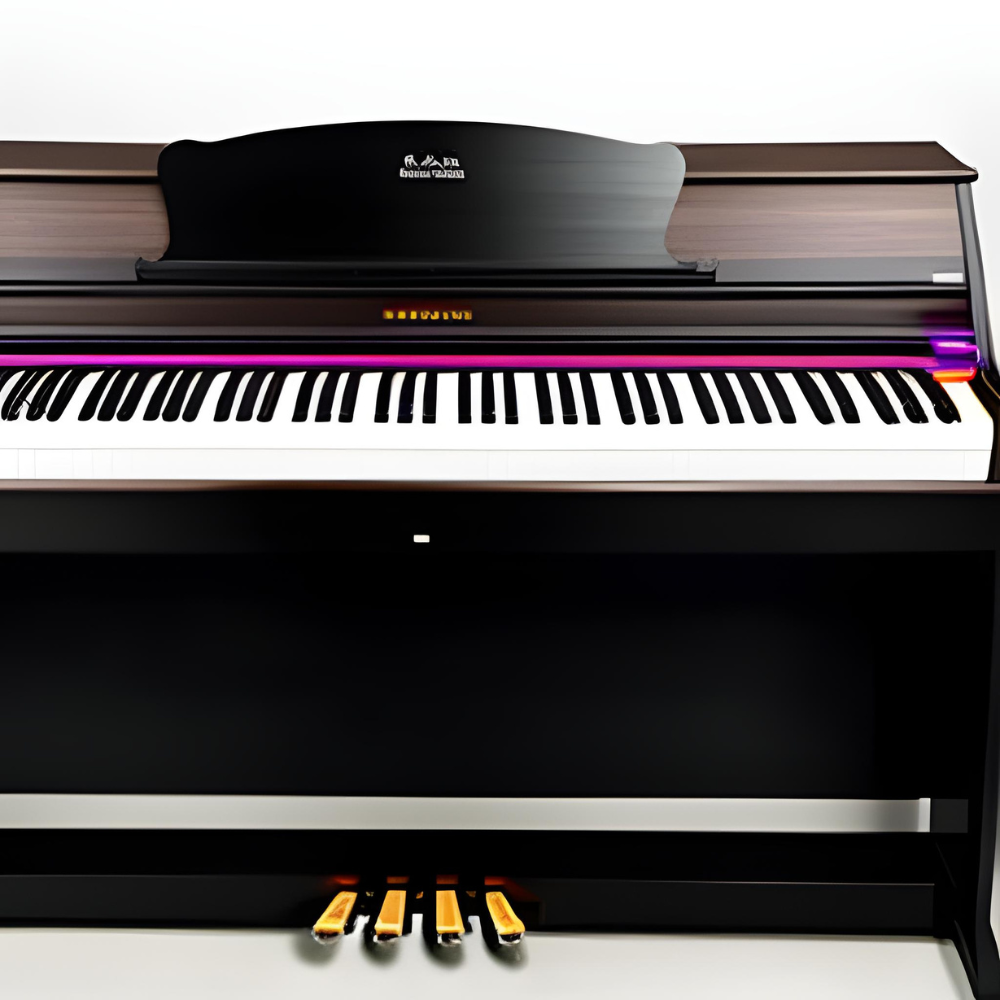
Digital pianos come in various designs, from compact and portable models to full-sized consoles that closely resemble traditional acoustic pianos. They utilize either digital sampling or modeling techniques to recreate the sound of a piano, with some models offering incredibly realistic and expressive tones.
The key action of digital pianos can range from unweighted and semi-weighted keys to fully-weighted keys, which mimic the feel of an acoustic piano to varying degrees. You can learn more about the differences between weighted, semi-weighted, and unweighted keys in our article on key types.
Many digital pianos come with a variety of built-in sounds, including different piano tones, electric pianos, organs, and other instruments. They also offer electronic features like metronomes, recording capabilities, headphone jacks, and USB/MIDI connectivity, making them an excellent tool for practice, composition, and digital music production. If you’re interested in using your digital piano with a Digital Audio Workstation (DAW), you can check out our list of the best DAWs of 2023.
Some popular digital piano brands include Yamaha, Casio, Roland, and Korg. Each brand offers a wide range of models to cater to different skill levels, preferences, and budgets. Some notable models from these brands are:
To help you find the perfect digital piano for your needs, we have curated several lists of the best digital pianos in different price ranges:
By exploring these resources, you’ll be well on your way to finding the ideal digital piano that suits your individual preferences and requirements.
Design
Digital pianos come in various designs, ranging from compact, portable models to full-size, furniture-style pianos. Some common designs include:
- Portable digital pianos: Lightweight and easy to transport, ideal for musicians on the go or those with limited space.
- Upright digital pianos: Resemble traditional upright acoustic pianos, often with wooden cabinets and built-in speakers.
- Stage pianos: Designed for professional use on stage, these models typically have high-quality sounds and advanced features but may require additional amplification.
- Digital grand pianos: Mimic the look and feel of a grand piano, featuring full-sized keyboards and sophisticated sound technology.
Sound
Digital pianos use digital samples or physical modeling to recreate the sound of an acoustic piano. Key factors affecting the sound quality include:
- Polyphony: The number of notes a piano can play simultaneously, with higher polyphony allowing for more complex musical passages.
- Sampling: The process of recording and reproducing the sound of an acoustic piano. Higher-quality samples result in more realistic sound reproduction.
- Modeling: An alternative to sampling, where the sound is generated through mathematical algorithms. This can result in a more dynamic and expressive sound.
- Speakers: The quality and positioning of the built-in speakers can significantly affect the overall sound experience.
Keys
The keyboard is a crucial aspect of a digital piano, as it affects the playability and overall feel of the instrument. Features to consider include:
- Weighted keys: Weighted keys mimic the feel of an acoustic piano, providing resistance and enabling more expressive playing.
- Graded hammer action: This feature simulates the varying weight of an acoustic piano’s keys, with lower notes feeling heavier and higher notes lighter.
- Touch sensitivity: The ability of the keys to respond to the force of a player’s touch, allowing for expressive playing dynamics.
Electronic Features
Digital pianos offer a range of electronic features that can enhance the playing experience and aid in learning, such as:
- Metronome: A built-in metronome helps players practice their rhythm and timing.
- Recording: Many models allow for recording and playback of performances, useful for reviewing practice sessions or composing music.
- Connectivity: USB and MIDI ports enable connection to computers and other devices for expanded functionality.
- Sound options: Digital pianos often include a variety of instrument sounds, effects, and drum patterns for added versatility.
Pedals
Pedals are an essential component of a piano, allowing players to sustain notes, soften the sound, or create other effects. Digital pianos typically come with one to three pedals:
- Sustain pedal: The most commonly used pedal, it allows notes to continue sounding after the keys are released.
- Soft pedal: Softens the sound of the piano, often used for more delicate passages.
- Sostenuto pedal: Sustains only the currently held notes, enabling selective sustain for complex passages.
Portability
Portability is an important consideration for those who need to transport their piano frequently. Portable models are generally lighter and more compact, while furniture-style pianos are heavier and less mobile.
Maintenance
Digital pianos require less maintenance compared to acoustic pianos, as they do not need regular tuning or adjustments. However, basic care includes:
- Keeping the piano clean and dust-free.
- Avoiding exposure to extreme temperatures or humidity.
- Ensuring proper handling and storage during transportation.
Repairs
While digital pianos are generally low-maintenance, they can still experience issues requiring repair, such as:
- Electronics: Malfunctions in the sound engine, speakers, or connections may require professional assistance.
- Keys: Stuck or non-responsive keys can often be fixed by cleaning or replacing the key mechanism.
- Pedals: Worn or non-functional pedals may need to be repaired or replaced.
It’s essential to consult a professional or the manufacturer’s guidelines for proper repair procedures.
Price
Digital piano prices vary widely depending on the brand, model, features, and build quality. Entry-level models can start as low as $300, while high-end models can exceed $10,000. It’s crucial to consider your needs and budget when selecting a digital piano.
Summing It Up
Digital pianos offer a convenient alternative to acoustic pianos, with various designs, sound quality, and features available. When choosing a digital piano, consider factors such as design, key action, electronic features, portability, and price. While digital pianos require less maintenance than their acoustic counterparts, proper care and occasional repairs are still necessary to ensure a long-lasting and enjoyable playing experience.
Pros and Cons
Pros:
Portability: One of the key benefits of digital pianos is their portability. They are generally lighter and easier to transport than their acoustic counterparts. This makes them a popular choice for gigging musicians or those who need to move their instrument frequently.
Affordability: Digital pianos are often more affordable than acoustic pianos, making them a great option for beginners or those on a budget. Check out our list of the best digital pianos for under $1000 and the best digital pianos for beginners under $500.
Volume Control: With a digital piano, you can control the volume or even use headphones for silent practice. This is perfect for those who live in apartments or shared spaces.
Maintenance: Digital pianos require little to no maintenance, as they do not need regular tuning or other costly services.
Versatility: Digital pianos often come with a variety of sounds, effects, and recording capabilities. This allows for greater creativity and experimentation. Explore the world of Digital Audio Workstations (DAWs) to further enhance your digital piano experience.
Cons:
Sound Quality: While digital pianos have made significant advancements in sound quality, they still cannot fully replicate the rich, warm tones of an acoustic piano.
Touch Sensitivity: Digital pianos may not provide the same level of touch sensitivity and responsiveness as acoustic pianos, although some models come very close. Learn more about weighted, semi-weighted, and unweighted keys to better understand the differences.
Top Brands
Now that we’ve covered the pros and cons of digital and acoustic pianos, let’s take a closer look at some of the most popular brands on the market.
Yamaha
Yamaha is a well-established and respected brand, offering a wide range of digital and acoustic pianos. Some of their most popular digital piano models include the Yamaha P125, Yamaha Arius YDP-165B, and Yamaha P45. Yamaha’s acoustic pianos are renowned for their quality and craftsmanship, making them a popular choice for professional musicians and serious piano enthusiasts.
Casio
Casio is known for producing affordable, high-quality digital pianos, making them an excellent choice for beginners or those on a budget. Some of their popular models include the Casio PX-770 and the Casio Privia PX-S3000. Casio’s digital pianos often come with a variety of features and functions, such as built-in lessons, multiple sound options, and USB connectivity.
Roland
Roland is another highly respected brand, known for their innovative and high-quality digital pianos. Their digital pianos often feature cutting-edge technology, such as Roland’s SuperNATURAL sound engine and PHA-4 keyboard action. Popular Roland models include the Roland FP-60X and the Roland FP-30X.
Korg
Korg is a versatile brand, offering a range of digital pianos, synthesizers, and workstations. Korg digital pianos are known for their quality sound and innovative design. Some popular Korg models include the Korg Grandstage and the Korg Minilogue. Korg’s instruments are popular among professional musicians and composers, as well as those seeking unique and creative sound options.
Conclusion
In conclusion, the choice between a digital piano and an acoustic piano ultimately depends on your individual needs, preferences, and budget. Digital pianos offer portability, affordability, and versatility, making them an excellent option for beginners, those on a budget, or those looking for a more portable instrument. On the other hand, acoustic pianos offer unparalleled sound quality, touch sensitivity, and a timeless aesthetic, making them the preferred choice for many professional musicians and serious piano enthusiasts.
When considering which brand to choose, Yamaha, Casio, Roland, and Korg each offer their own unique strengths and features. Yamaha is renowned for its quality and craftsmanship, Casio for its affordability and range of functions, Roland for its innovative technology, and Korg for its versatility and creative sound options. Before making a decision, we recommend that you:
- Determine your budget and prioritize your needs.
- Test out different piano models from each brand, both digital and acoustic, to see which one feels and sounds the best to you.
- Read reviews and research the specific features and functions of each model, such as keyboard action and sound quality.
Ultimately, whether you choose a digital or an acoustic piano, remember that the most important factor is your personal enjoyment and growth as a musician. Whichever type of piano you decide on, make sure it inspires you to practice, create, and share your music with the world. For more information on digital pianos, acoustic pianos, and everything in between, explore our other articles, such as best headphones for digital piano players, digital piano vs. MIDI keyboard, and best portable keyboard pianos.

